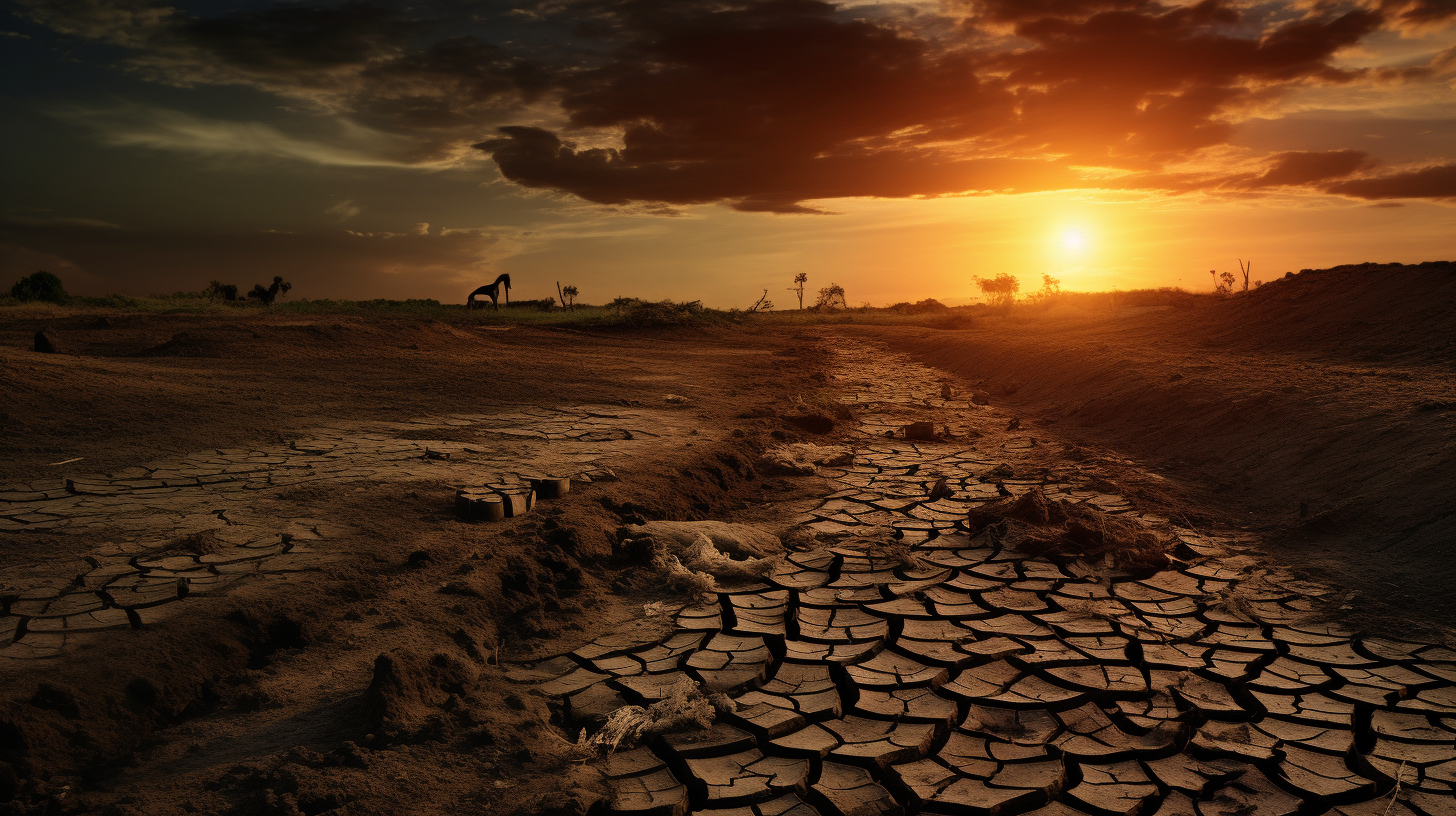Our world has become eyeless. A sun once full of vigor now withers in the sky, veiled by layers of acrid smog and the desperate remnants of geoengineering. The ‘Scorched Sky’ phenomenon, as it has been morbidly nicknamed, harkens to days suffused with the gloom of perpetual twilight.
Not long ago, we reveled under an unobstructed sun, but carelessness has proven costly. Trails of smoke from apocalyptic wildfires, cumulative volleys of ash from relentless volcanic eruptions, and the particulate aftermath of human hubris have sewn a tapestry that diminishes the quintessence of our star. This is not a celestial quenching, but an atrocity of our own making.
As a poignant echo to our previous piece ‘Solar Wraiths – Saviors or Harbingers of Dystopia’, the landscape continues to mutate under the weakened sunlight. The skeletal frameworks of the ‘Solar Wraiths’ endure, standing as aged sentinels of a brighter past. Intriguingly, our predilection for solar solutions has waxed, not waned, tapping into the irony of a civilization clawing for photons in the gloom.
Decentralized solar endeavours carry the narrative forward. Home-grown innovators, black-market luminaries, and do-it-yourself energy gurus craft contraptions that cling to the wan light. With each new invention, we witness a counterpart in shadow; a dark market for ‘diminished solar’ has burgeoned, an economy of scarcity and desperation, marked by solar piracy and hoarding.
Climate scientists warn of the impending solar minimum; a time in the sun’s cycle when it doles out even less solace and fury alike. As we bask in this feeble glow, a palpable sense of ironical dread accompanies our predicament. The deep-rooted hope of solar providence once whispered as a dream through sleeping lands is now scoffed at. Adaptation has become our mantra, with society morphing inexorably into shapes dictated by shades and eclipses. The sun dims not in energy alone, but in the societal memories of its once-celebrated warmth.
Survival demands that we reinterpret our relationship with the dimming sun. In the wake of declining crop yields and the ebbing vitality of ecosystems, new tales emerge. Those of nocturnal agriculture and ‘solar rationing’ have taken root in the chronicles of our sullen existence. Families huddle around feeble solar lamps, sharing stories in quiet resignation, etching out an existence more attuned to moon and stars than to the distant promise of dawn.
This is an age of reflection, yes, but reflection deprived of the companion of light. Humanity, in its dim-lit habitation, must ponder the bitter lessons etched into the skies. We are prodded to explore the philosophies that arise from the ashes: is the solar shadow suffocating our planet merely a preview of the void to come or a grim canvas upon which we may yet paint our resurgence?
In the cold and shadowy marketplaces, where the trade of aged solar technology prevails over hope, speculation abounds. Some fan the flames of optimism, clinging to the belief that our star’s subdued luster is but a chapter in a longer tale. Others, hunched in their soot-lined cloaks, declare it the final throes of a star betrayed by its children.
The ‘Scorched Sky’ presides over us, serving as an unrelenting reminder of our plight. And though our will to endure remains unbowed, it is tinged with the sorrowful understanding that in seeking the light, our shadows have grown too long, casting doubt on whether the sun can ever truly rise again for us.
